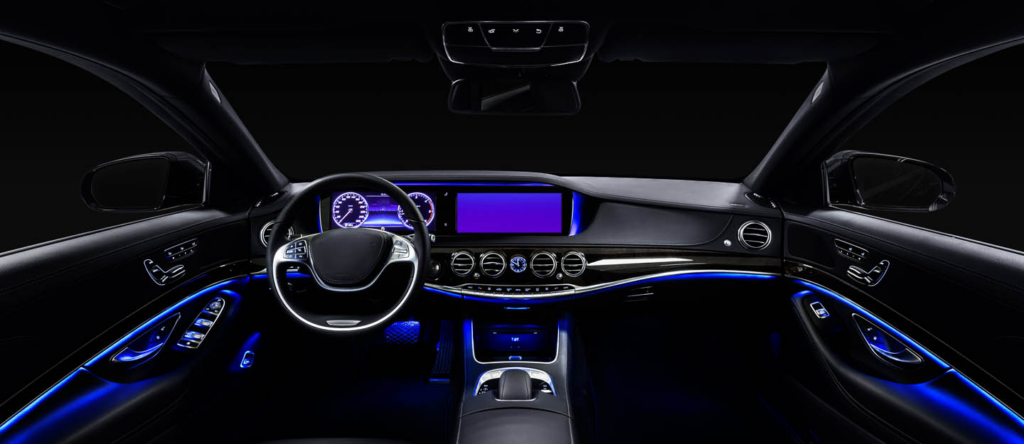
Modern cars feature sophisticated smart interior lighting that goes far beyond simple illumination. These advanced systems meld aesthetics, convenience, and safety through intelligent technologies. By dynamically adjusting to driver and passenger preferences and environmental conditions, they create a more comfortable and secure driving experience. Features like ambient lighting, adaptive brightness, and welcome sequences enhance the cabin’s visual appeal and functionality. Understanding the intricacies of these systems, including their sensors and controls, is key to appreciating their benefits and ensuring their continued optimal performance.
Adaptive Lighting Technology
Smart interior lighting systems utilize adaptive lighting technology to automatically adjust brightness and color based on various factors, such as ambient light conditions and vehicle mode. For instance, during nighttime driving, the system dims the lights to avoid distractions, while in daylight, it enhances visibility for reading or accessing controls. Many systems use light sensors to detect external conditions and adjust the interior lighting accordingly. This ensures a comfortable driving experience while conserving energy.
Integration with Vehicle Systems
Smart interior lighting systems are seamlessly integrated with other vehicle systems, such as climate control, infotainment, and navigation. When a driver selects a specific mode, such as “Sport” or “Comfort,” the lighting adjusts to match the mood or enhance the driving experience. For example, navigation systems may synchronize lighting with voice prompts, illuminating the relevant areas during turns or lane changes. This integration enhances functionality and user convenience. Going for the Auto Repair in Littleton, Co based services would be essential.
Customizable Ambient Lighting
Customizable ambient lighting is a hallmark of smart interior lighting systems. Drivers can choose from a wide range of colors and intensity levels to personalize their vehicle’s interior. These systems often allow customization through touchscreens or smartphone apps, enabling users to set themes that match their preferences or moods. Ambient lighting not only adds to the vehicle’s aesthetic appeal but also improves visibility, especially in low-light conditions.
Energy Efficiency and LED Technology
Smart interior lighting systems rely on energy-efficient LED technology, which provides brighter illumination while consuming less power compared to traditional incandescent bulbs. LEDs are more durable and have a longer lifespan, reducing the need for frequent replacements. Additionally, these systems often feature automatic shutoff functions to prevent battery drain, further enhancing energy efficiency. Some vehicles also use dynamic lighting, which reacts to driving conditions, conserving energy when lighting is not essential.
Future Trends in Smart Lighting
The future of smart interior lighting lies in advancements such as AI integration and voice-controlled lighting adjustments. AI-driven systems can learn user preferences over time and adjust lighting automatically. Gesture control and augmented reality (AR) lighting are also emerging trends, enhancing interaction and safety. As vehicles continue to evolve, smart lighting systems will play a critical role in creating intuitive and immersive driving experiences.
By combining adaptive technology, energy efficiency, and customization, smart interior lighting systems elevate both functionality and comfort in modern cars, marking a significant step forward in automotive innovation.
